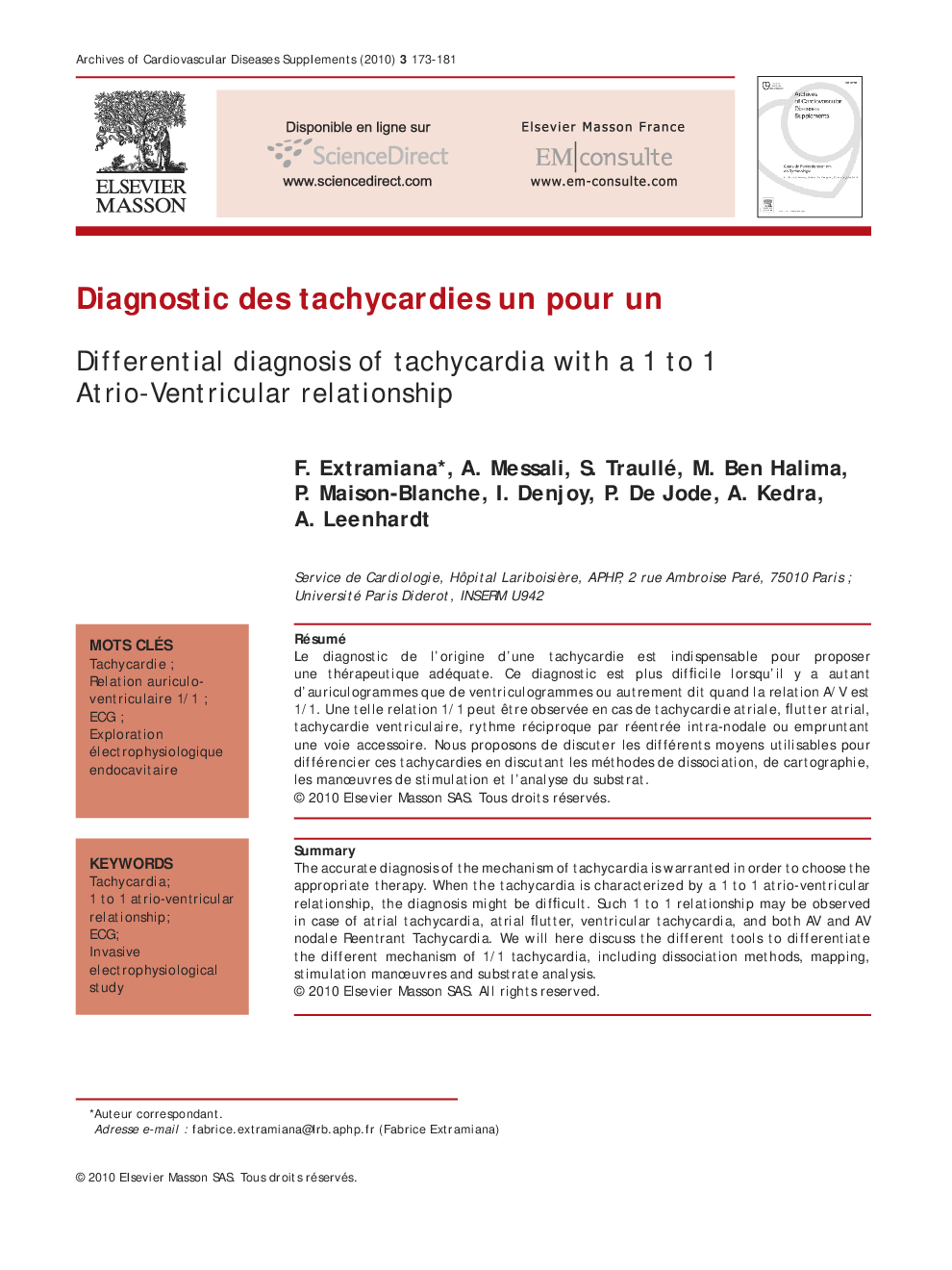| Article ID | Journal | Published Year | Pages | File Type |
|---|---|---|---|---|
| 2890935 | Archives of Cardiovascular Diseases Supplements | 2010 | 9 Pages |
RésuméLe diagnostic de l’origine d’une tachycardie est indispensable pour proposer une thérapeutique adéquate. Ce diagnostic est plus difficile lorsqu’il y a autant d’auriculogrammes que de ventriculogrammes ou autrement dit quand la relation A/V est 1/1. Une telle relation 1/1 peut être observée en cas de tachycardie atriale, flutter atrial, tachycardie ventriculaire, rythme réciproque par réentrée intra-nodale ou empruntant une voie accessoire. Nous proposons de discuter les différents moyens utilisables pour différencier ces tachycardies en discutant les méthodes de dissociation, de cartographie, les manœuvres de stimulation et l’analyse du substrat.
SummaryThe accurate diagnosis of the mechanism of tachycardia is warranted in order to choose the appropriate therapy. When the tachycardia is characterized by a 1 to 1 atrio-ventricular relationship, the diagnosis might be difficult. Such 1 to 1 relationship may be observed in case of atrial tachycardia, atrial flutter, ventricular tachycardia, and both AV and AV nodale Reentrant Tachycardia. We will here discuss the different tools to differentiate the different mechanism of 1/1 tachycardia, including dissociation methods, mapping, stimulation manœuvres and substrate analysis.
